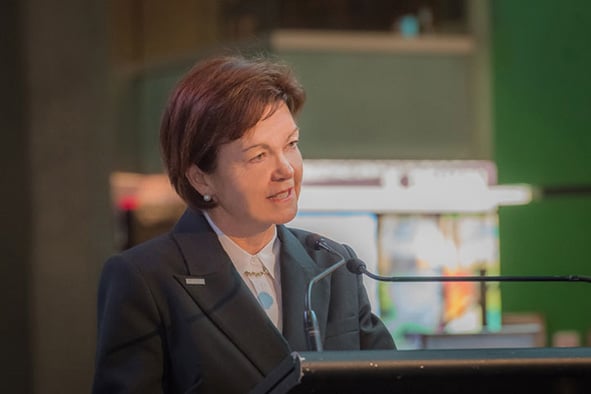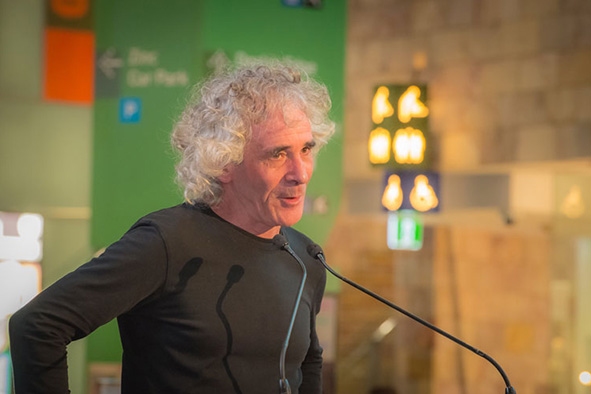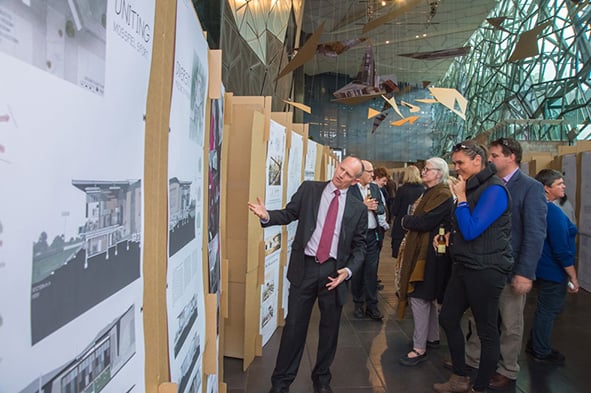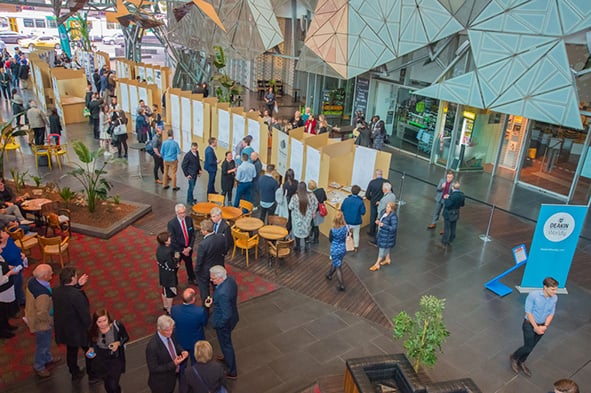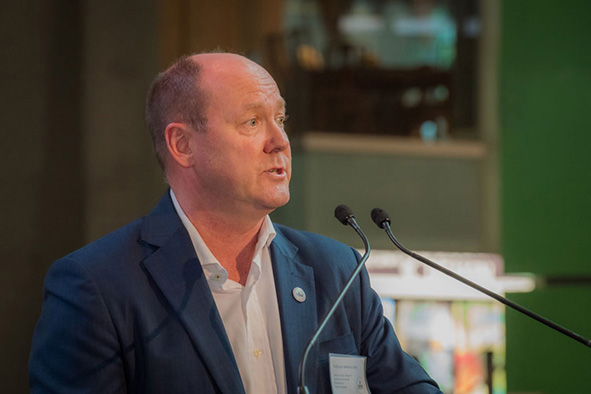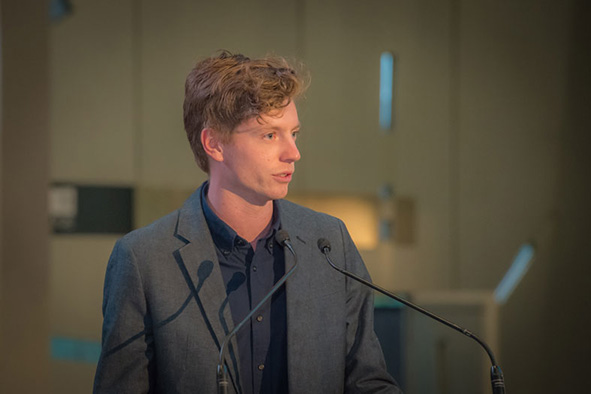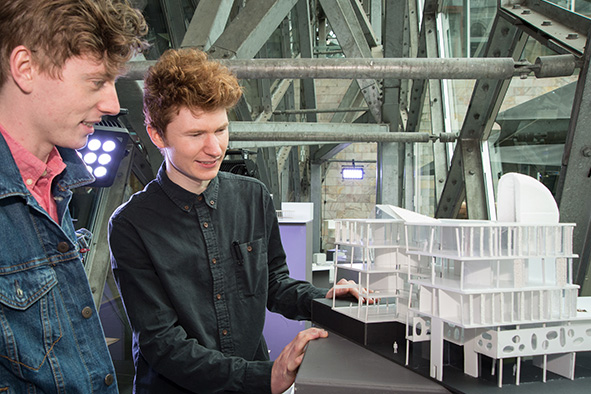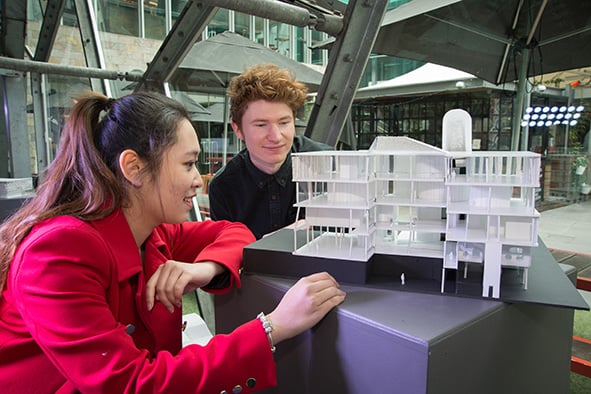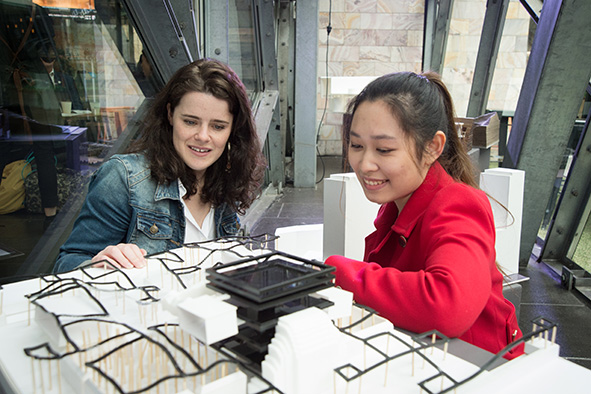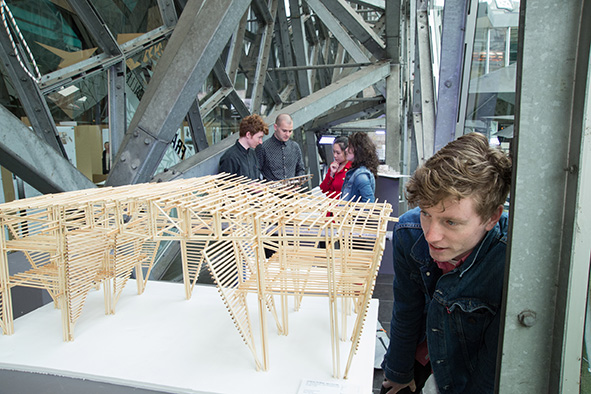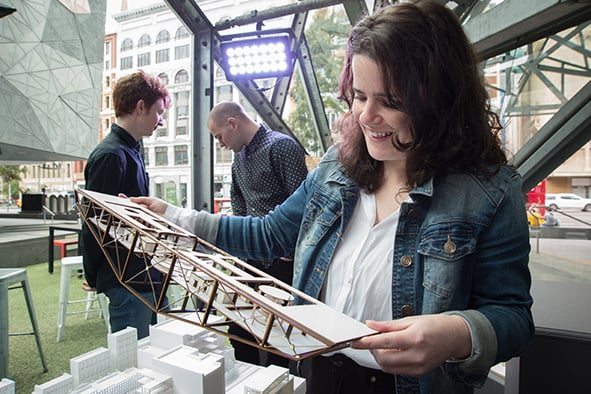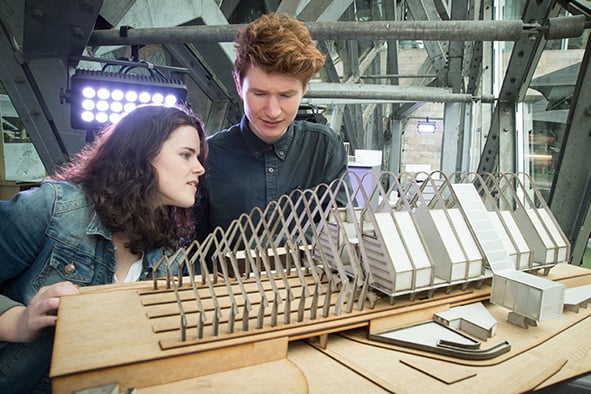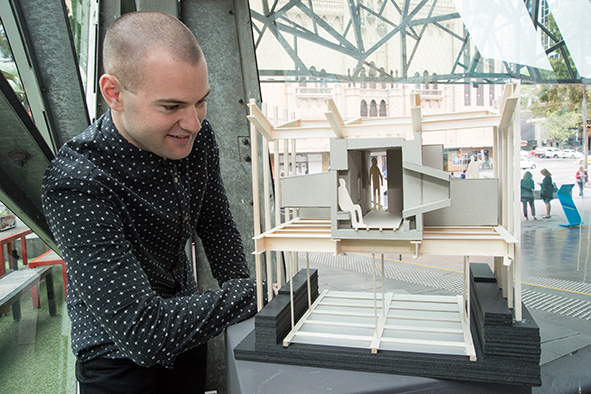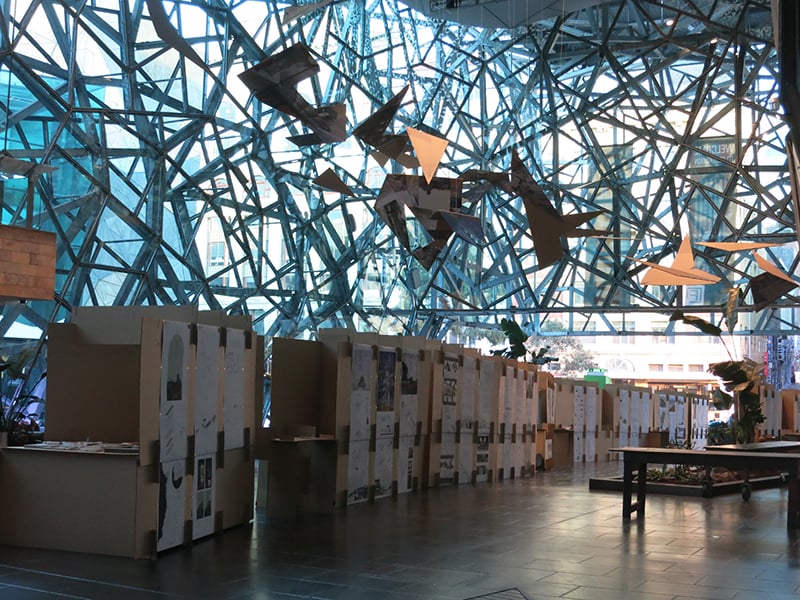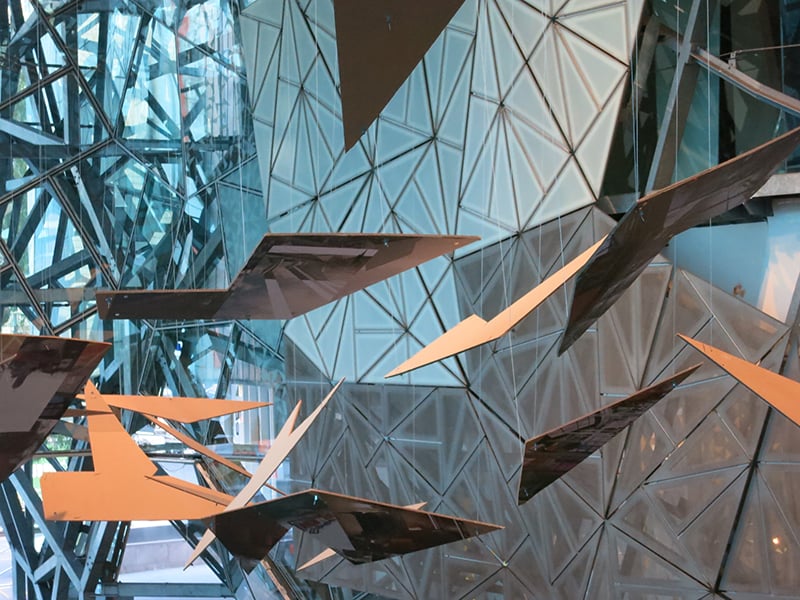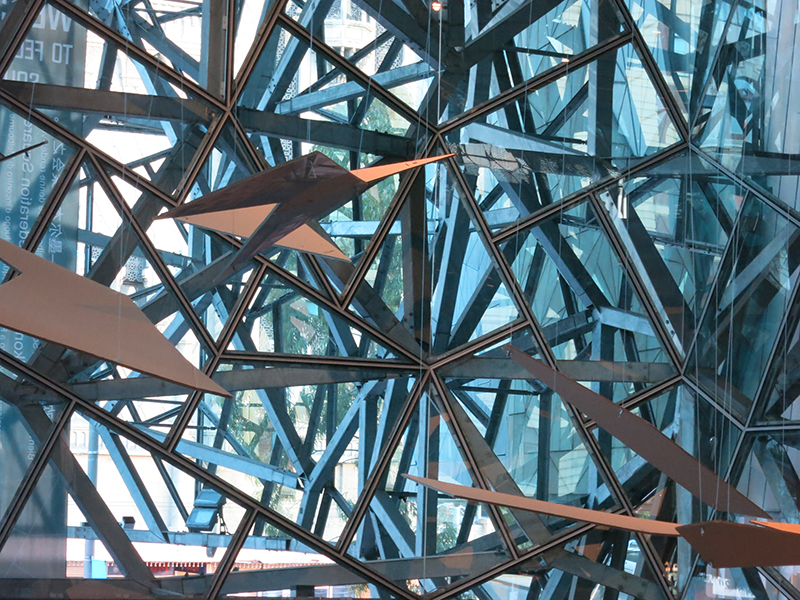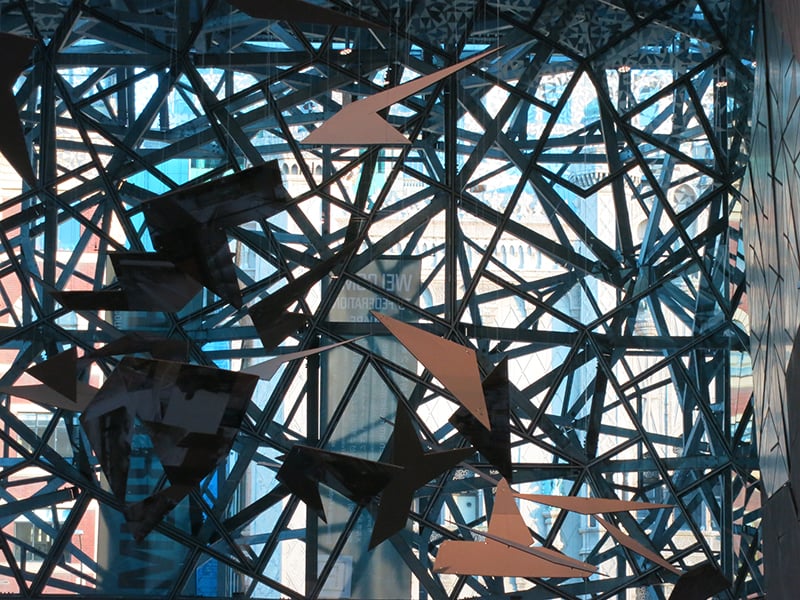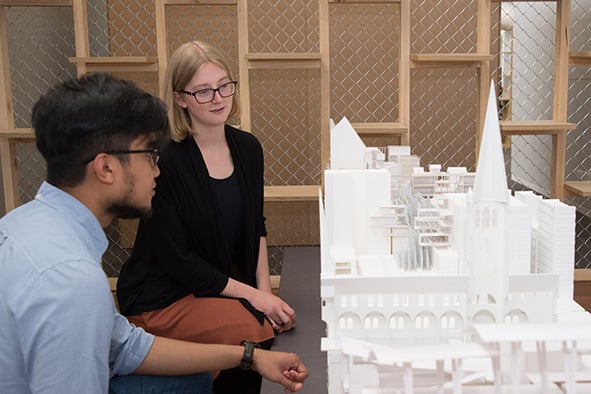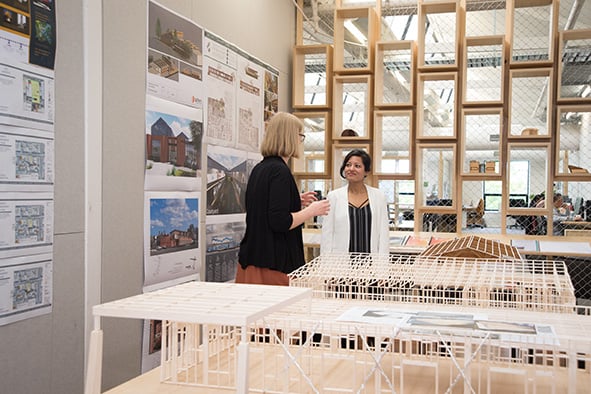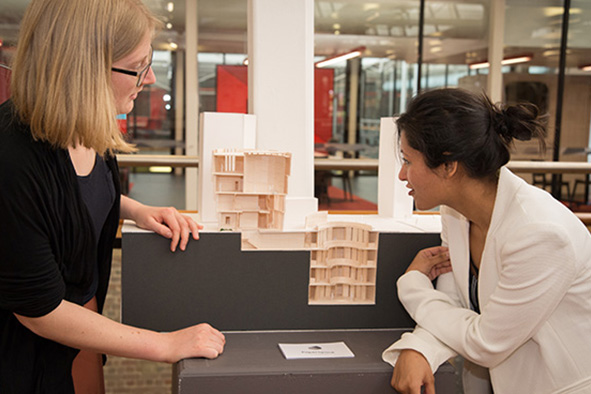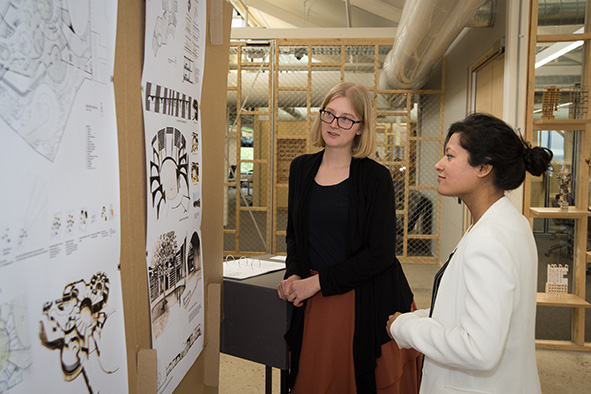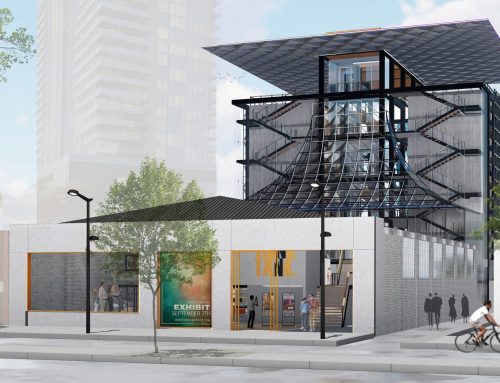PaperSpace 2016 was held from 31 October to 4 November 2016 at The Atrium Federation Square and was followed by a Geelong exhibition from 8 to 18 November in the A+B Gallery.
Deakin’s School of Architecture and Built Environment’s annual PaperSpace student exhibition showcases outstanding work from architecture, construction management, landscape and planning undergraduate and master degree students.
Architect Michael Markham, who opened PaperSpace 2016, suggested that the work and intentions of A+B was becoming quite distinctive in an architectural world where insulated self-identity is the norm. He suggested that the work at PaperSpace 2016 should be described as “sober”, which he went on to suggest that by this he meant these works, and the authors, were “not drunk on their own ideas”. He saw the works in the exhibition demonstrating a disciplined approach to architecture, and this disciplined approach should provide the authors with some sense of the rigour and responsibility required of architecture if it is going to be of any substantial benefit to the environmental and political challenges that we face, and especially as these challenges will become more pressing, and will loom larger in the lives of these graduates as they move into the profession. He also put out thoughts that the work, and the School, exhibited the possibility and the development of an attitude to architecture that would be very conscious of identity and place, but in a manner that was not soft and weakly accepting, but rather one that was very conscious of the conditions that lead to its making. He suggested that there were indications of architecture with an identity. He suggested that a quote from the significant Japanese master, Kazuo Shinohara, that his “machine will not be international, it will have a name and nationality clearly indicated”, might begin to be applied to the endeavours of the School and the student productions.
Deakin’s Vice-Chancellor, Professor Jane den Hollander in her opening address also made specific mention of the responsibilities of architects and landscape architects. She recognized the professional clarity of the PaperSpace exhibition, and the necessity of this when we put the work of graduates into the most public, high profile display space in Melbourne. She also realized that the strength of this message was not one ordained by authorship, but rather by the breadth of projects, the professional honesty of the productions, and the collective presence of our concern for the responsibilities of the built environment that resonated when viewing the exhibition. I suggest she was also indicating that the staff and the students of the School took these responsibilities personally, not simply as the required actions of the institution, and that this dedication was honourable and special. Its availability through the vehicle of PaperSpace was a great achievement of the students and staff, and one she was proud to be part of in giving her address.
Diego Fullaondo from the School has also written regarding the responsibilities and possibilities of PaperSpace. He notes, with some pride, that, “by coming to this venue we want to make explicit an aspiration for architecture that we have at Deakin. An aspiration that drives our curriculums and the way we try to teach our students at the School: the profound and intrinsic public role and responsibility of architecture. For too many years, decades perhaps, architecture has refused to assume some of its traditional responsibilities. The reasons for this are probably complex and multiple; however not the least of these is our (architects) own negligence. Unfortunately, the discipline has progressively turned into a more or less superficial operation where appearance of the built form seemed to be our sole area of ‘expertise’. All ‘serious’ matters relating to the built environment were undertaken by professionals from other areas, limiting the role of the architect to that of an awkward consultant. Coming to such a public venue, one intends to bring architecture back to the public. Firstly, away from the cryptic and dogmatic discourse that has enlarged the distance between architects and the general public, making our words and actions incomprehensible and irrelevant. Secondly, it allows us to demonstrate and claim back our capacities and responsibilities that are unfortunately, nowadays, only evident for the public in a handful of projects completed here and there.”
I certainly endorse these preceding thoughts and comments, and am encouraged by the shared dedication to the task of architecture demonstrated by the works, and the event of PaperSpace. The “sober” strength demonstrated at Paperspace 2016 is very worthy, especially in light of the honesty of Diego’s previous comments. As I said in my address, I certainly encourage the graduates to realize that their work does demonstrate a concern and recognition of the scope of architecture, and that it is essentially the most comprehensive discipline at the table of the built environment. And as I stated at the opening to architects, students, and guests that until the architects show up with the drawings of the scheme that has been willed into existence, the other consultants have nothing to do. And that should be seen as an exaltation to your worth and your responsibilities.
Professor Des Smith.
facebook.com/paperspaceexhibition
SAVE THE DATE PAPERSPACE 2017
Melbourne – Federation Square
Monday 6 – Friday 10 November
Geelong – A+B Gallery Waterfront
Tuesday 14 – Friday 24 November
SAVE THE DATE FOR PAPERSPACE 2017
6 – 10 November
Melbourne – Federation Square
14 – 24 November
Geelong – A+B Gallery Waterfront

